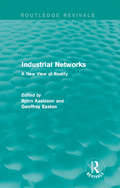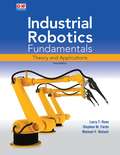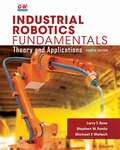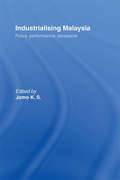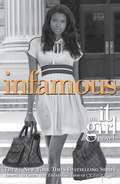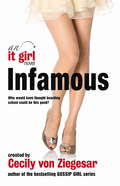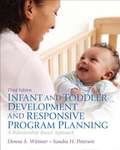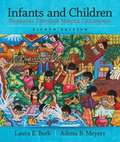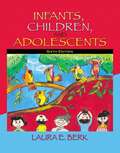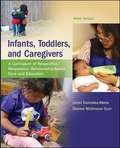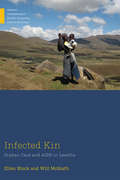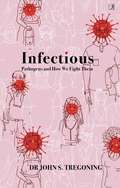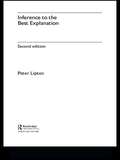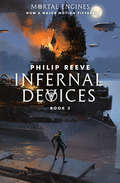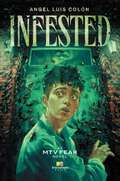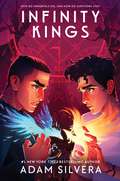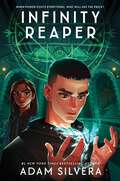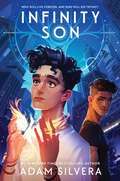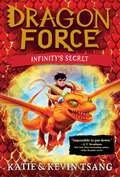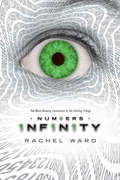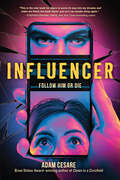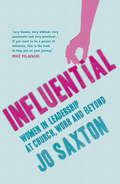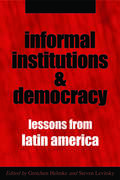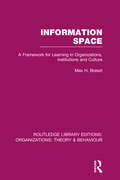- Table View
- List View
Industrial Networks (Routledge Revivals): A New View of Reality
by Björn Axelsson Geoffrey EastonFirst published in 1992, this volume brings together contemporary studies and reviews the research which established the study of networks as an area in its own right. By looking at the foundations of industrial networks and analysing network methodology and modelling, this book offers an integrated and coherent approach to the whole area. Covering small group analysis, network change processes and implications for business strategy, and presenting new ways to exploit inter-organisational relationships in the face of change, it tackles key issues with important implications for the future. This book will be of interest to students of economics and business.
Industrial Robotics Fundamentals: Theory And Applications
by Larry T. Ross Stephen W. Fardo Michael F. WalachRobotics: Theory and Industrial Applications is an introduction to the principles of industrial robotics, related systems, and applications. This text is a comprehensive tool in learning the technical aspects of robotics and includes coverage of power supply systems, degrees of freedom, programming methods, sensors, end effectors, implementation planning, and system maintenance. Each chapter begins with an outline of topics, learning objectives, and a listing of technical terms. The key concepts are discussed using a systems approach to enhance student learning. <P><P> The second edition is updated with full-color illustrations and photos that reflect changes in both the field of robotics and technology in general. The content has been revised to keep pace with robotic technology and reorganized to maximize student comprehension. Various features throughout the text address special interest topics, including pioneers in the field of robotics, careers in robotics, and exciting applications of robotic technology.
Industrial Robotics Fundamentals: Theory And Applications
by Larry T. Ross Stephen W. Fardo & Michael F. WalachIndustrial Robotics Fundamentals is an introduction to the principles, systems, and applications for industrial robotics or autonomous machines. The technical aspects of industrial robotics are covered in four units: Principles of Robotics; Power Supplies and Movement Systems; Sensing and End-of-Arm Tooling; and Control Systems and Maintenance. This 4th edition reflects new evolutions in the industrial robotics field, including coverage of Industry 4.0, the Industrial Internet of Things (IIoT), and Light Detection and Ranging (LiDAR). Special features address pioneers in the field, careers in the industry, and applications of technology, including robot lawnmowers and machine-to-machine communications.
Industrializing Malaysia: Policy, Performance, Prospects
by Jomo K. S.Despite growing concern over environmental issues and the sustainability of economic growth, industrialization is still generally associated with progress and development. This is particularly true of developing countries where industrialization is often the nation's top priority. Industrializing Malaysia presents a critical analysis of the experience of industrialization in Malaysia, examining the role, impact and efficacy of post-independence industrialization policies. The author refocuses attention on some major intended as well as unintended implications and consequences of policies and performance. A wide range of issues is covered: in addition to general historical commentaries and sectoral studies, there are analyses of direct foreign investment, technology, linkages, free trade zones, industrial estates, and rural development.
Infamous (It Girl #7)
by Cecily Von ZiegesarWhen Jenny Humphrey confessed to a crime she didn't commit--starting the rampant fire that burned down Miller Farm--she thought her life at elite Waverly Academy was over. But her last minute escape from expulsion made Jenny the most talked-about girl in school. What nobody knows is who saved her. Now at the annual Halloween masquerade ball, she has a plan to unveil her secret admirer. Callie Vernon knows who her Prince Charming is: Easy Walsh. But when he discovered she and Tinsley Carmichael tried to get Jenny kicked out, Easy dumped her on the spot. Now Callie is dressing up as Cinderella in hopes of winning back his heart. Can she convince Easy she's the one before the clock strikes midnight? Or will her glass slipper--and her heart--be permanently broken?
Infamous: An It Girl Novel
by Cecily Von ZiegesarThe seventh fabulous novel in the New York Times bestselling IT GIRL series. Jenny Humphrey has survived the trial of the barn fire with only a few scratches, and has actually managed to make allies of the notorious Tinsley Carmichael and Callie Vernon in the process. Easy Walsh has been kicked out of Waverly once and for all, and Callie is struggling to keep it together in her love's absence. But new friends Jenny and Tinsley have a plan to get her out of her funk: head to NYC over the Thanksgiving holiday for a little rest, relaxation, and pampering. And of course, a whole lot of trouble. But can the alliance between Jenny, Tinsley, and Callie last? They're all beautiful, captivating, and a little crazy... and they all want to be Waverly's It Girl.
Infant and Toddler Development and Responsive Program Planning: A Relationship-Based Approach
by Donna S. Wittmer Sandra H. PetersenThe Third Edition of this comprehensive and applied resource for teachers of the very young details and celebrates the many nuances of infant and toddler development from pre-birth through age 36 months old. The authors clearly explain theory, include current research, and explain appropriate practice throughout the chapters on development, curriculum, program planning, guidance, and professionalism. Using a relationship-based model for understanding how infants and toddlers grow and learn in typical and atypical ways, this book maintains a keen focus on the importance of families' and teachers' relationships and responsiveness in interactions with children, the latest developmental research, an emphasis on child-centered planning, a particularly strong coverage of infants and toddlers with special needs, and a focus on the effects of culture, families, and quality programs on infant-toddler development and interactions. Readers will come away with a deeper understanding of why, according to the science of child development, certain practices support or hinder an infant's or toddler's optimal development-and how to provide responsive, high-quality care.
Infants and Children: Prenatal through Middle Childhood, Eighth Edition
by Laura E. Berk Adena B. MeyersA best-selling, chronologically organized child development text, Berk and Meyers’ Infants and Children: Prenatal Through Middle Childhood is relied on in classrooms worldwide for its clear, engaging writing style, exceptional multicultural and cross-cultural focus, rich examples, and long-standing commitment to presenting the most up-to-date scholarship while also offering students research-based, practical applications that they can relate to their personal and professional lives. The authors takes an integrated approach to presenting development in the physical, cognitive, emotional, and social domains; emphasize the complex interchanges between heredity and environment; and provide exceptional attention to culture.
Infants, Children, and Adolescents (Sixth Edition)
by Laura E. BerkBerk’s signature storytelling style invites students to actively learn beside the text’s “characters” who share their influential experiences and developmental milestones. Students are provided with an exceptionally clear and coherent understanding of child development, emphasizing the interrelatedness of all domains—physical, cognitive, emotional, and social—throughout the text narrative and in special features. Focusing on education and social policy as critical pieces of the dynamic system in which the child develops, Berk pays meticulous attention to the most recent scholarship in the field. Berk helps students connect their learning to their personal and professional areas of interest and their future pursuits as parents, educators, heath care providers, social workers, and researchers.
Infants, Toddlers, and Caregivers: A Curriculum of Respectful, Responsive, Relationship-Based Care and Education
by Janet Gonzalez-Mena Dianne Widmeyer EyerInfants, Toddlers, and Caregivers is an ideal introduction to care and education in the first three years of life, featuring a respectful, cohesive approach inspired by Magda Gerber and Dr. Emmi Pikler, pioneers in what Gerber called "Educaring. " The text emphasizes the value of play and exploration, as well as giving careful attention to those caregiving times, when relationships grow and an abundance of learning occurs.
Infected Kin: Orphan Care and AIDS in Lesotho (Medical Anthropology)
by Ellen Block Will McGrathAIDS has devastated communities across southern Africa. In Lesotho, where a quarter of adults are infected, the wide-ranging implications of the disease have been felt in every family, disrupting key aspects of social life. In Infected Kin, Ellen Block and Will McGrath argue that AIDS is fundamentally a kinship disease, examining the ways it transcends infected individuals and seeps into kin relations and networks of care. While much AIDS scholarship has turned away from the difficult daily realities of those affected by the disease, Infected Kin uses both ethnographic scholarship and creative nonfiction to bring to life the joys and struggles of the Basotho people at the heart of the AIDS pandemic. The result is a book accessible to wide readership, yet built upon scholarship and theoretical contributions that ensure Infected Kin will remain relevant to anyone interested in anthropology, kinship, global health, and care. Supplementary teaching materials are available at: https://www.csbsju.edu/sociology/anthropology-teaching-resources/useful-resources/infected-kin-teaching-resources
Infectious: Pathogens and How We Fight Them
by Dr John S. Tregoning&‘This book catapults us to the frontier of the vital science of infections and immune responses. Tregoning is a perfect guide, writing with wit and intelligence about a subject which surely everyone feels the importance of now. Brilliant and right on the zeitgeist.&’Daniel M. Davis, author of The Beautiful Cure and The Secret Body &‘Packed with fascinating facts, intriguing anecdotes and more than a few Dad jokes, Infectious is an expertly guided, pacey tour through the world of all the stuff that&’s trying to kill us and how our immune systems and human ingenuity are fighting back.&’Dr Kat Arney, science communicator and author of Rebel Cell: Cancer, Evolution and the Science of Life Nature wants you dead. Not just you, but your children and everyone you have ever met and everyone they have ever met; in fact, everyone. It wants you to cough and sneeze and poop yourself into an early grave. It wants your blood vessels to burst and pustules to explode all over your body. And – until recently – it was really good at doing this… COVID-19 may be only the first of many modern pandemics. The subject of infection and how to fight it grows more urgent every day. How do pathogens cause disease? And what tools can we give our bodies to do battle? Dr John S. Tregoning has dedicated his career to answering these questions. Infectious uncovers fascinating success stories in immunology and virology, making this book not only a vital overview of infection, but also a hopeful story of ongoing human ingenuity.
Inference to the Best Explanation (International Library of Philosophy)
by Peter LiptonHow do we go about weighing evidence, testing hypotheses, and making inferences? According to the model of Inference to the Best Explanation, we work out what to infer from the evidence by thinking about what would actually explain that evidence, and we take the ability of a hypothesis to explain the evidence as a sign that the hypothesis is correct. In Inference to the Best Explanation, Peter Lipton gives this important and influential idea the development and assessment it deserves.The second edition has been substantially enlarged and reworked, with a new chapter on the relationship between explanation and Bayesianism, and an extension and defence of the account of contrastive explanation. It also includes an expanded defence of the claims that our inferences really are guided by diverse explanatory considerations, and that this pattern of inference can take us towards the truth. This edition of Inference to the Best Explanation has also been updated throughout and includes a new bibliography.
Infernal Devices: Infernal Devices (Mortal Engines #3)
by Philip ReeveMortal Engines is now a major motion picture produced by Peter Jackson!* "Reeve's [Mortal Engines] remains a landmark of visionary imagination." -- School Library Journal, starred review"A breathtaking work of imagination, Hester Shaw is a heroine for the ages. The moment we finished reading [Mortal Engines] we knew we wanted to make it into a movie." -- Producer Peter JacksonPhilip Reeve's epic city-eat-city adventure series continues with Mortal Engines Book 3: Infernal Devices.The mighty engines of Anchorage have been rusted and dead for years. The derelict city no longer roams the Ice Wastes, but has settled on the edge of the land that was once America. Tom Natsworthy and Hester Shaw are happy in the safety of a static settlement, but their daughter, Wren, is desperate for adventure. When a dangerously charming submarine pirate offers her a chance to escape, Wren doesn't think twice about leaving her home and her parents behind. But the pirate wants something in return -- Wren must steal the mysterious Tin Book. To do so will ignite a conflict that could tear the whole world apart.Mortal Engines is now a major motion picture produced by Peter Jackson!
Infested: An MTV Fear Novel (Fear)
by Angel Luis Colón&“A thrilling, I-can&’t-stop-reading page-turner. If Infested doesn&’t make your skin crawl, check your pulse.&” —Paul Tremblay, bestselling author of The Cabin at the End of the World and A Head Full of Ghosts There&’s something in the dark…watching…waiting…in this pulse-pounding young adult horror novel set in a luxury condo building haunted by a ghost with a power unlike you&’ve ever seen.Manny Rivera has just moved from Texas to the Bronx in New York. The summer before senior year should be all about hanging with his friends and making some spending money, but instead, Manny is forced to do menial tasks in his new home, a luxury condo his stepdad is managing. Thankfully, he meets Sasha, a girl his age. Sure, she&’s protesting the building, but she still turns out to be really cool. And he strikes up an unlikely friendship with Mr. Mueller, the building&’s exterminator. Maybe life in the Bronx won&’t be so bad. Then the nightmares begin. And Manny swears there are cockroaches crawling everywhere…even under his skin. When building contractors start to go missing, Manny and Sasha come to the terrifying realization that Mr. Mueller is not who he says he is. Or rather, he is, but he died decades ago in a fire exactly where Manny&’s new building is located. A fire that Mueller set. Now, in a race against time, Manny must rescue his family from a deranged ghost determined to set the Bronx ablaze once again.
Infinity Kings (Infinity Cycle #3)
by Adam SilveraIn this epic conclusion to the New York Times bestselling Infinity Cycle, two brothers find themselves in a heartbreaking war against one another. The hardcover edition features a reversible jacket with two stunning covers by Kevin Tong and Meybis Ruiz Cruz!After the ultimate betrayal, Emil must rise up as a leader to stop his brother before he becomes too powerful. Even if that means pushing away Ness and Wyatt as they compete for his heart so he can focus on the war.Brighton has a legion of followers at his command, but when he learns about an ancient scythe that can kill the unkillable, that’s all he will need to become unstoppable against Emil and other rising threats. Meanwhile, Maribelle aligns with her greatest enemy to resurrect her lost love, and Ness infiltrates political circles to stop Iron from ruling the country, but both missions lead to tragedies that will change everyone’s lives forever.As the Infinity Son and the Infinity Reaper go to war, who will be crowned the Infinity King?
Infinity Reaper (Infinity Cycle #2)
by Adam SilveraIn this gripping sequel to the New York Times bestselling Infinity Son, Adam Silvera brings a diverse cast of heroes and villains to life in an alternate New York where some people are born with powers, while others steal them from the blood of endangered magical creatures. Emil and Brighton defied the odds. They beat the Blood Casters and escaped with their lives—or so they thought. When Brighton drank the Reaper's Blood, he believed it would make him invincible, but instead the potion is killing him.In Emil's race to find an antidote that will not only save his brother but also rid him of his own unwanted phoenix powers, he will have to dig deep into the very past lives he's trying to outrun. Though he needs the help of the Spell Walkers now more than ever, their ranks are fracturing, with Maribelle's thirst for revenge sending her down a dangerous path.Meanwhile, Ness is being abused by Senator Iron for political gain, his rare shifting ability making him a dangerous weapon. As much as Ness longs to send Emil a signal, he knows the best way to keep Emil safe from his corrupt father is to keep him at a distance.The battle for peace is playing out like an intricate game of chess, and as the pieces on the board move into place, Emil starts to realize that he may have been competing against the wrong enemy all along.
Infinity Son: A Specters Novel (Infinity Cycle #1)
by Adam SilveraA New York Times, Publishers Weekly, and IndieBound bestseller!Balancing epic and intensely personal stakes, bestselling author Adam Silvera’s Infinity Son is a gritty, fast-paced adventure about two brothers caught up in a magical war generations in the making. Growing up in New York, brothers Emil and Brighton always idolized the Spell Walkers—a vigilante group sworn to rid the world of specters. While the Spell Walkers and other celestials are born with powers, specters take them, violently stealing the essence of endangered magical creatures.Brighton wishes he had a power so he could join the fray. Emil just wants the fighting to stop. The cycle of violence has taken a toll, making it harder for anyone with a power to live peacefully and openly. In this climate of fear, a gang of specters has been growing bolder by the day.Then, in a brawl after a protest, Emil manifests a power of his own—one that puts him right at the heart of the conflict and sets him up to be the heroic Spell Walker Brighton always wanted to be.Brotherhood, love, and loyalty will be put to the test, and no one will escape the fight unscathed.Don't miss Infinity Reaper, the gripping sequel, which includes a special prequel short story starring Ness!
Infinity's Secret (Dragon Force #1)
by Katie Tsang Kevin TsangHow to Train Your Dragon meets Skandar and the Unicorn Thief as a brother and sister go to a summer camp aimed at future dragon riders in this first book in the high-flying middle grade adventure series Dragon Force.Twelve-year-old Lance Lo dreams becoming part of the Dragon Force, a team of heart-bonded humans and dragons dedicated to protecting the world from dangerous magical creatures. So he can&’t wait to attend Camp Claw with his younger sister, Zoe, and begin learning about dragon training. But Lance quickly finds himself falling behind in the lessons and activities. He&’s the only camper who&’s failed to achieve a heart-bond with a dragon, and with Zoe impressing everyone with her natural ability, Lance struggles with jealousy. But when Camp Claw is mysteriously attacked in the dead of night, Lance has to level up—in spirit and in skill—because it&’s up to him and the latest recruits to get to the root of the growing danger and prove they&’ve got what it takes to save the day.
Infinity: Infinity (Numbers #3)
by Rachel WardThe mind-blowing conclusion to the chilling NUMBERS trilogy: Because everyone wants to live forever.No matter what it takes, Sarah's desperate to escape from the numbers.Always numbers. Sarah loves Adam, but can't bear the thought that every time he looks in her eyes, he can see her dying; can see her last day.It's 2029. Two years since the Chaos. Sarah and Adam are struggling to survive. She knows he always envisioned them together "'til death do us part." But will a child come between them? The child she loves. The child he saved.Little Mia was supposed to die that New Year's Day. The numbers don't lie. But somehow she changed her date. Mia's just a baby, oblivious to her special power. But ruthless people are hunting her down, determined to steal her secret. Because everyone wants to live forever.
Influencer
by Adam Cesare&“Horror fans will have a tough time putting this down once they start reading. A killer read.&”—Kirkus, STARRED Review Follow him or die...Influencer, by Bram Stoker Award–winning author Adam Cesare, is a tense and timely psychological thriller told from alternating points of view about a teenage girl who begins to suspect the charismatic new kid may in fact be a murderous psychopath. As more and more of her friends fall under his influence, her suspicions begin to come across like jealousy. But is she right? And if so, how much more dangerous would he be toward someone who has discovered his secret? A new and expanded paperback adaptation of the Audible Original, Influencer explores the dark side of social media and the cult of personalities that flourish there as the teens navigate their own fears about friendship and popularity, culminating in an epic battle of wills that will leave readers breathless.&“What's so scary about Influencer is how possible it is—how likely it feels, and just how convincingly real these characters are. I read a lot of scary stuff, but this is the only book for years to worm its way into my dreams and make me finish the book faster, just so I can maybe sleep again.&” —Stephen Graham Jones, New York Times bestselling author of The Only Good Indians &“Sizzling writing and a skin-crawling story make Influencer one of the most addictive horror novels I've read. It's deeply uncomfortable, deeply perceptive, and deliciously fun.&”—Darcy Coates, USA Today bestselling author of The Whispering Dead&“Influencer is a real nail-biter of a thriller! Relatable characters, devious plot twists, and a breakneck pace. Highly recommended!&” —Jonathan Maberry, New York Times bestselling author of Rot & Ruin and Long Past Midnight
Influential: Women in Leadership at Church, Work and Beyond
by Jo SaxtonAre you a woman getting on with shaping your surroundings - in the office, at church, in your local community? Do you ever feel unsupported and unequipped? Do you sometimes doubt your calling? If the answer to any of these questions is yes, INFLUENTIAL is for you. In it Jo Saxton unpacks biblical principles on leadership, interviews women who lead in different situations and contexts, asks the deepest, most difficult questions, and gives all sorts of practical ideas for how to be a woman of influence - wherever you are.
Informal Institutions and Democracy: Lessons from Latin America
by Gretchen HelmkeThis volume analyzes the function of informal institutions in Latin America and how they support or weaken democratic governance. Drawing from a wide range of examples—including the Mexican dedazo, clientelism in Brazil, legislative "ghost coalitions" in Ecuador, and elite power-sharing in Chile—the contributors examine how informal rules shape the performance of state and democratic institutions, offering fresh and timely insights into contemporary problems of governability, "unrule of law," and the absence of effective representation, participation, and accountability in Latin America.The editors present this analysis within a fourfold conceptual framework: complementary institutions, which fill gaps in formal rules or enhance their efficacy; accommodative informal institutions, which blunt the effects of dysfunctional formal institutions; competing informal institutions, which directly subvert the formal rules; and substitutive informal institutions, which replace ineffective formal institutions.
Informal Logic: A Pragmatic Approach (2nd Edition)
by Douglas WaltonSecond edition of the introductory guidebook to the basic principles of constructing sound arguments and criticising bad ones. Non-technical in approach, it is based on 186 examples, which Douglas Walton, a leading authority in the field of informal logic, discusses and evaluates in clear, illustrative detail. Walton explains how errors, fallacies, and other key failures of argument occur. He shows how correct uses of argument are based on sound strategies for reasoned persuasion and critical responses. This edition takes into account many developments in the field of argumentation study that have occurred since 1989, many created by the author. Drawing on these developments, Walton includes and analyzes 36 new topical examples and also brings in work on argumentation schemes. Ideally suited for use in courses in informal logic and introduction to philosophy, this book will also be valuable to students of pragmatics, rhetoric, and speech communication.
Information Space: A Framework For Learning In Organizations, Institutions, And Culture (Routledge Library Editions: Organizations)
by Max BoisotIn this book the author lays the foundations for a new political economy of information. The information space, or I-Space is the conceptual framework in which organizations, institutions and cultures are being transformed by new information and communication technologies. In the penultimate chapter, the I-Space’s usefulness as an explanatory framework is illustrated with an application: a case study of China’s modernization. Information Space proposes a radical shift in the way that we approach the emerging information age and the implications it holds for societies, organizations and individuals.
